Tom Lippincott - Modern Jazz Guitar Lessons - Part II
Published on 02 February 2016
Tom's Class: http://mikesclass.es/modernjazzguitar2
Tom's Master Page: http://mikesclass.es/tomlippincott
Modern Jazz Guitar Series:
Part I: http://youtu.be/p_38jZd5OTQ
Part II: http://youtu.be/9Fx_qI8pLMU
Part III: http://youtu.be/e-_LjahnzjY
Part IV: http://youtu.be/lyzaRfaUbW8
Part V: http://youtu.be/IzE0OyrPW3c
Excerpt from Tom's second or a 5-part series on Modern Jazz Guitar - available for download at www.mikesmasterclasses.com
Modern Jazz Guitar
The twenty-first century has, so far, been an exciting time for jazz with a flurry of creativity and innovation energized by the newest generation of jazz musicians. The guitar has become a more important instrument in jazz than ever before, and jazz groups featuring guitarists are now the norm rather than the exception.
Guitarists with unprecedented virtuosity and originality have driven the instrument's rise in prominence and have established a new "modern sound" that is becoming part of the jazz vocabulary. Players such as Kurt Rosenwinkel, Ben Monder, Jonathan Kreisberg, John Stowell, Gilad Hekselman, Adam Rogers, Lage Lund, and Nir Felder are inventive, ingenious, and forward-thinking while still managing to maintain a strong connection to the tradition. If you have heard these and other modern jazz guitarists and wondered How do they get that sound?, then this series of classes is for you.
The Modern Jazz Guitar series was created for the intermediate to advanced jazz guitarist who already has a basic command of traditional jazz vocabulary including the basics of improvising over chord changes, comping/chord vocabulary, and knowledge of standard chord progressions. This multi-part series examines the modern jazz guitar style in systematic detail and is divided into five classes that cover melody (single note improvisation), harmony (using chords for comping, chord soloing, and self-comping), rhythm, and tone/equipment. An informative introductory class examines the roots of the modern style and includes a discussion of the right and left hand techniques that many of the modern players use.
Numerous musical examples, including specific licks, phrases, and chord voicings in the style of several modern jazz guitarists, are demonstrated during the classes and provided in the written materials in traditional notation, tablature, and/or chord grid form, but the lessons have been designed to be open-ended enough that you will be encouraged to find your own path and work toward developing your unique musical voice.
Modern Jazz Guitar Part 2, Melody, covers:
• in-depth analysis of modern jazz guitar single-note soloing techniques
• examination of a standard chord progression (chord changes from "All the Things You Are") and brief overview of basic chord/scale analysis techniques and common substitute sounds
• practical 2-notes-per-string arpeggio fingerings for increased range when outlining chord tones and substitute sounds
• use of three-part-4th or suspended triad structures for generating new melodic material, with exercises for gaining fluency
• use of four-part-4th or 7sus4 chord structures for generating new melodic material, with exercises for gaining fluency
• other multiple interval structures, with exercises applied to major, melodic minor, and diminished scales, plus ideas for generating your own licks and patterns from the material
• arpeggio and melodic patterns using odd-numbered groupings of notes, with exercises for gaining fluency taken diatonically through the major scale
• examples of triad pairs and discussion of uses
• in-depth exploration of the augmented scale, including scale fingerings and intervallic patterns for gaining fluency
• discussion of three-note and four-note chords contained within the augmented scale with examples of licks generated from these structures, as well as ideas for generating your own material
• in-depth discussion of the harmonic major scale, with examples of the basic harmonies with their upper extensions and the harmonies they create
• multiple exercises that take material from previous examples and convert them to harmonic major, with ideas and suggestions for musical application
• discussion of pentatonic scales, including major, minor (1,2,b3,5,6), and pentatonic b6, with suggestions for ways to use them
• multiple etudes using "All the Things" chord changes that demonstrate the musical application of all the material discussed
• examples of licks and patterns in the style of several modern jazz guitarists including Kurt Rosenwinkel, Jonathan Kreisberg, Ben Monder, and John Stowell
• backing MP3 play-along tracks used in the video for all examples and etudes available for free download at www.tomlippincott.com
• running time: 119 minutes
• includes 28 pages of written examples and exercises
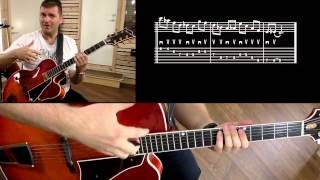 HOW TO IMPROVISE ON ALTERED CHORDS - JAZZ GUITAR L...
HOW TO IMPROVISE ON ALTERED CHORDS - JAZZ GUITAR L...
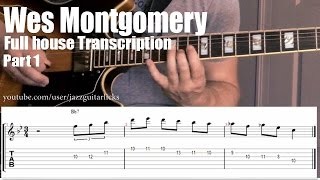 Wes Montgomery jazz guitar lesson with tab | "Full...
Wes Montgomery jazz guitar lesson with tab | "Full...
 Pat Martino Guitar Lesson: Welcome to a Prayer Bre...
Pat Martino Guitar Lesson: Welcome to a Prayer Bre...
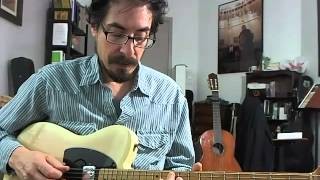 50 Jazz Blues Licks - #30 Tommy Flanagan - Guitar...
50 Jazz Blues Licks - #30 Tommy Flanagan - Guitar...
 Fingerstyle Guitar Lesson: Finding Transition Poin...
Fingerstyle Guitar Lesson: Finding Transition Poin...
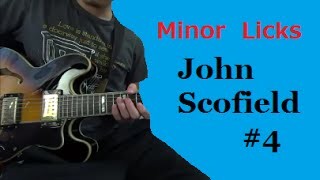 Minor Licks - John Scofield #4 ã€ÂAdvanced Gui...
Minor Licks - John Scofield #4 ã€ÂAdvanced Gui...
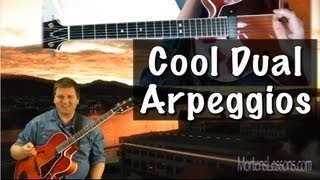 Learn Jazzy Dual Arpeggios jazz guitar lesson Trit...
Learn Jazzy Dual Arpeggios jazz guitar lesson Trit...
 I VI II V - Adam Rogers #4
I VI II V - Adam Rogers #4
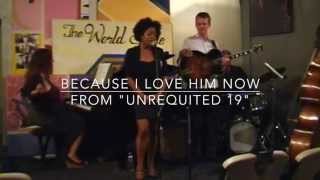 Because I Love Him Now
Because I Love Him Now
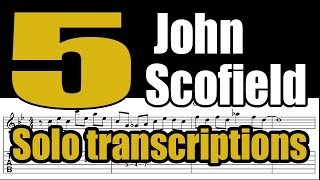 5 John Scofield solo transcriptions with tabs - Ja...
5 John Scofield solo transcriptions with tabs - Ja...